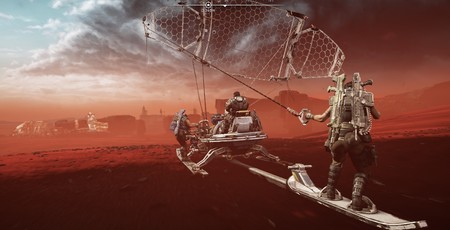
Price: £47.99
Developer: The Coalition
Publisher: Microsoft Studios
Platform(s): PC, Xbox One
Version reviewed: PC
'Progressive' is not a word I typically associate with Gears of War. The long-running series has always been straightforward in its storytelling and hyper-masculine in its tone, to the point where you could almost smell the testosterone emanating from the disk. The original trilogy portrays a straight up battle between good and evil where men are men, women are also men, and everything else is a monster that needs to be annihilated. By men.
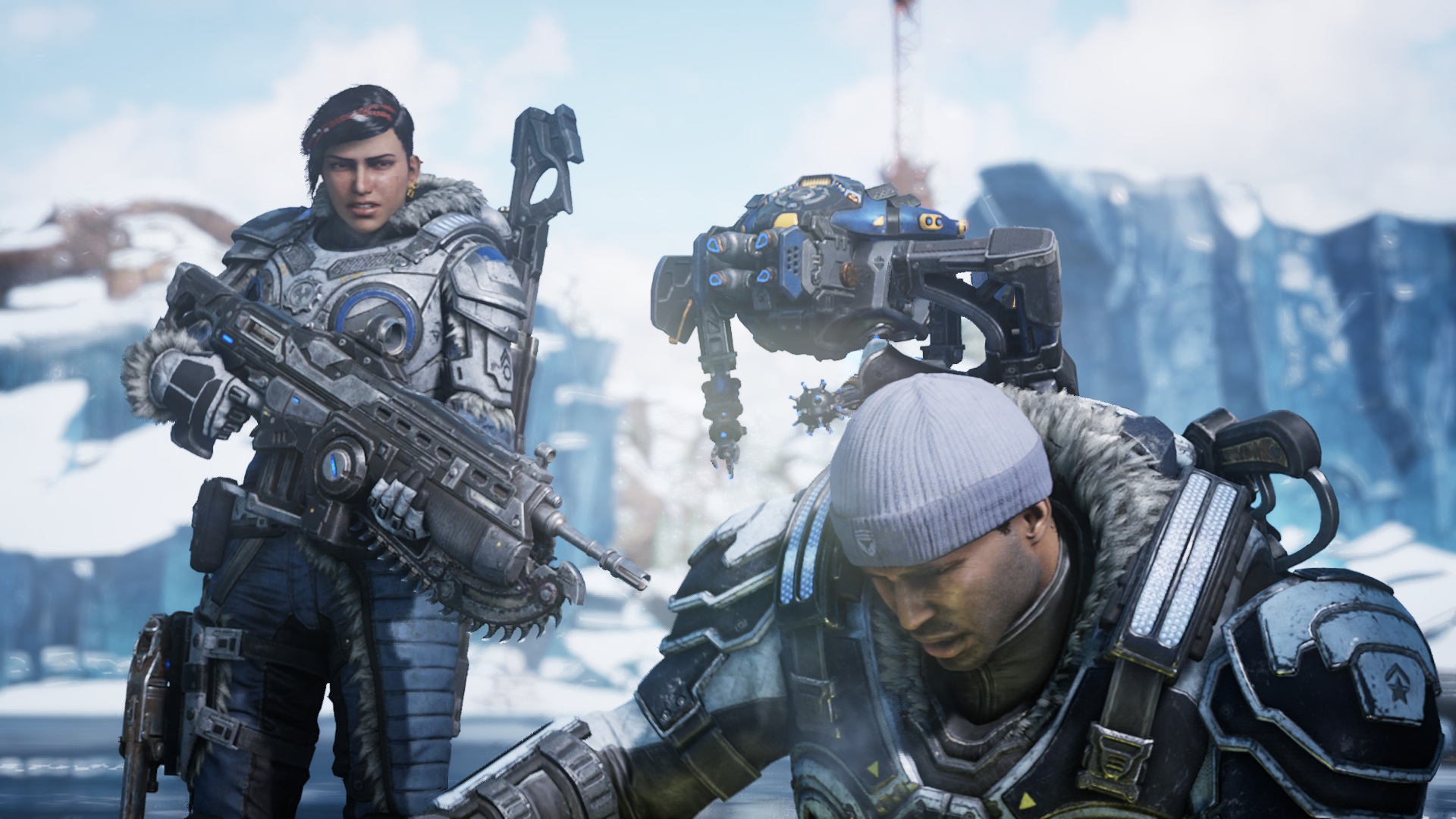
It was simple, it was dumb, it was earnest, and it was fun. But with Gears 5, The Coalition has proved that Gears of War can be a lot more than that, without sacrificing the simple pleasures of slicing a monster in half with a chainsaw. Structurally, mechanically, stylistically, and tonally, Gears 5 is the most ambitious game in the series yet. I like it very much.
The most obvious change is Gears 5 has a female protagonist, Kait, although the switch doesn’t occur immediately. The first act still has us play as J.D. Fenix, son of Marcus and the hero of Gears 4. Together with Kait, Marcus, and Del, the team searches an abandoned missile silo for a way to reactivate the mighty orbital weapon the Hammer of Dawn. But after the Locust attack a COG settlement, Kait begins having visions of the Locust, visions that eventually become premonitions. At this point the story changes perspective, as Kait embarks on a personal mission to uncover the reason behind her new ability.
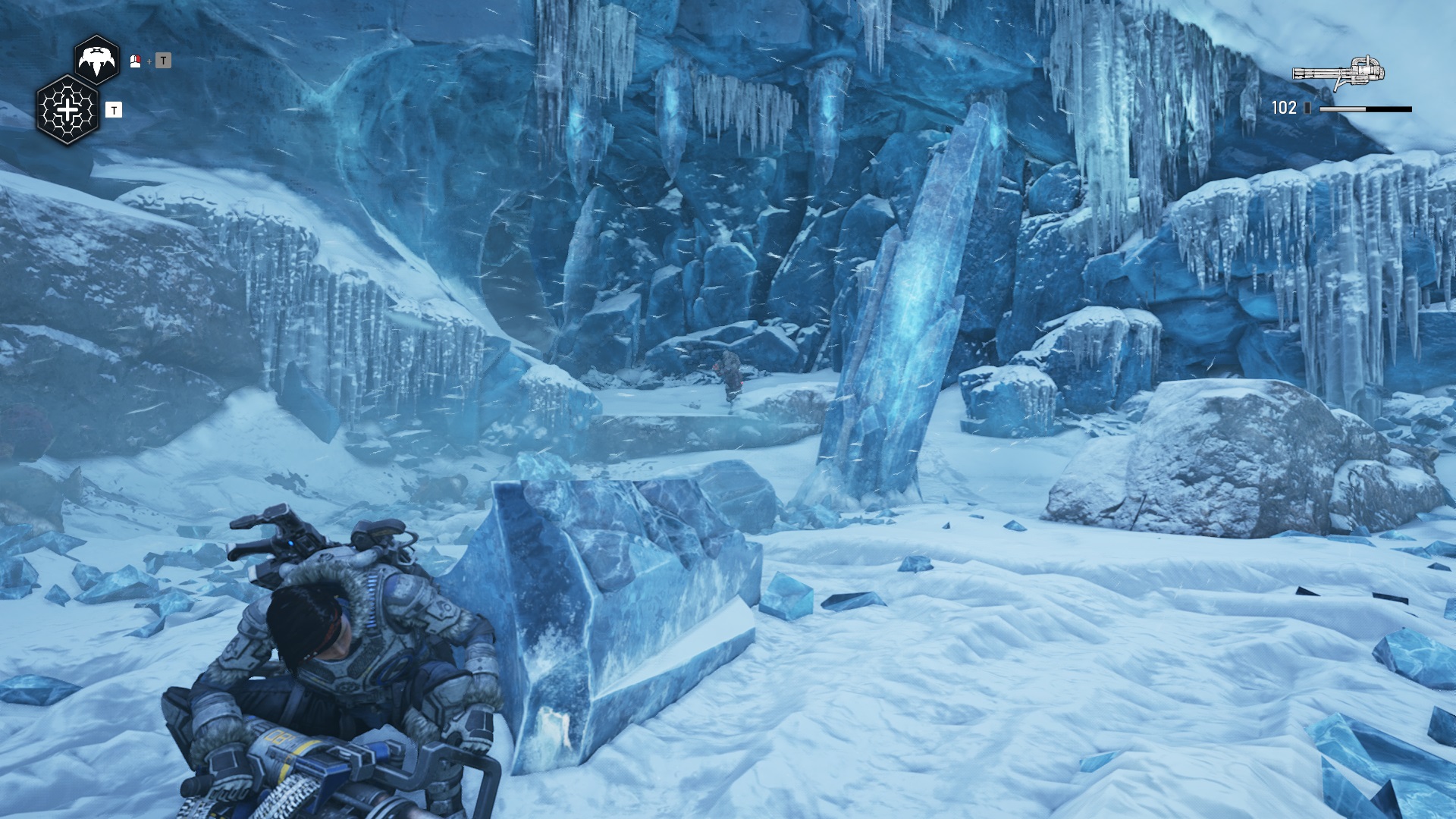
It’s a straightforward story but one that is well told. Despite its many absurdities, Gears has always sported a straight-laced narrative, hence it’s wonderful to see The Coalition inject Gears with a sense of humour and self-awareness. The characters are constantly trading daft remarks and pithy one-liners, which enhances the sense of comradeships as well as making me chuckle. Some of the best lines come from Marcus Fenix himself, acting in the role of collective squad-dad. When one character remarks, 'I don’t share your optimism,' Fenix says, 'That’s the first time anyone’s accused me of optimism.'
There are reasons beyond the humour why I like Gears 5’s storytelling, but for now let’s talk about how Gears 5 plays. At first it seems no different than any other Gears, apart from looking more colourful. But from the second act onward, the linear level design suddenly gives way to several wide-open spaces that you’re free to explore. That’s right: Gears has gone open-world.
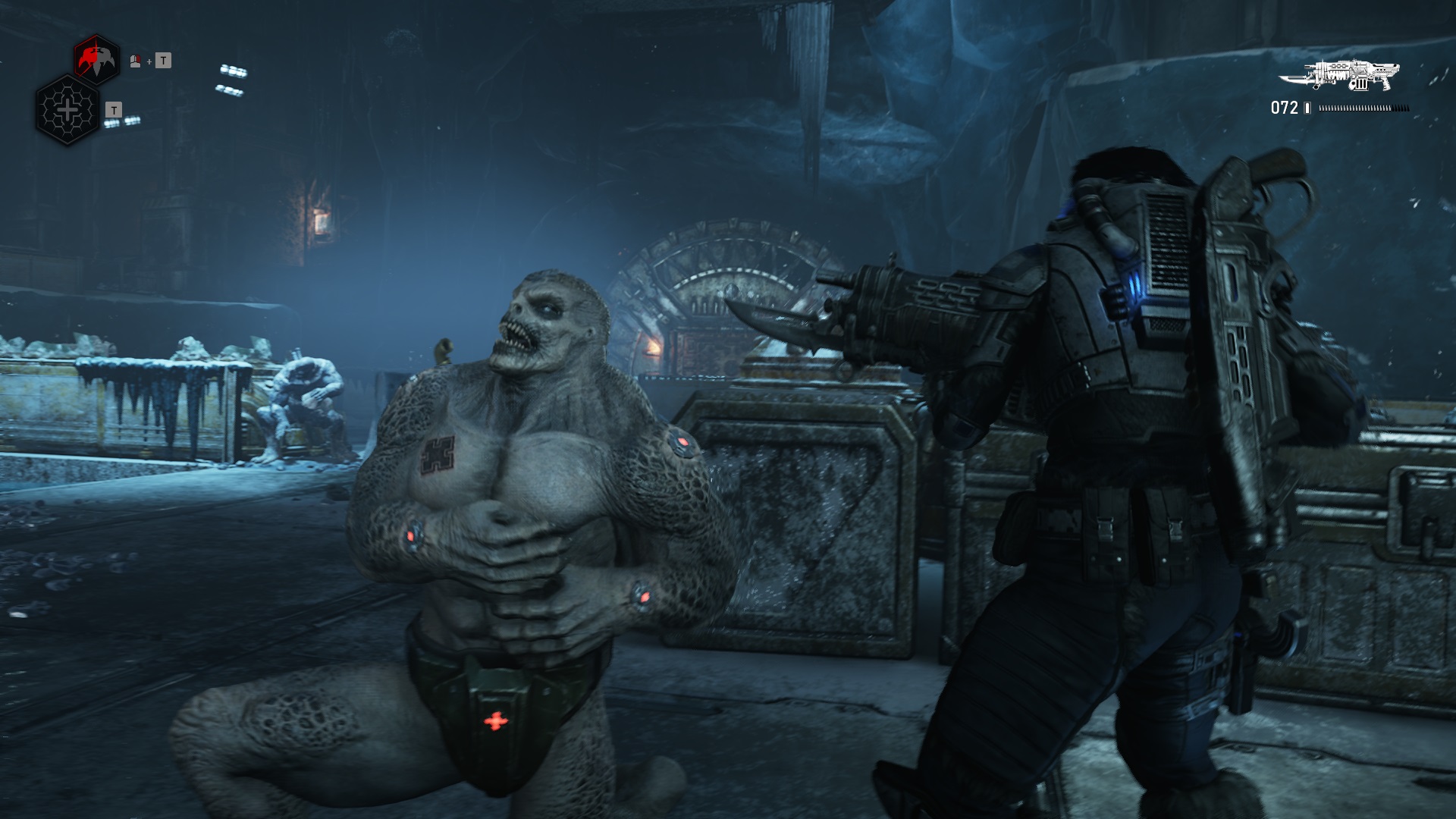
Sort of.
Gears 5’s open spaces are more Metro Exodus than Assassin’s Creed. Each is a few kilometres across with a handful of optional side missions. These range from plundering the crash sites of Condor Helicopters to exploring an abandoned mine in search of powerful explosives. It’s more about giving you a taste of adventure than actual freedom, but it works for a couple of reasons. First off, the environment design is stunning. The first area is a sprawling, freezing snowscape with such impressive ice and snow surfaces that it slightly blew my mind. The second is a vast, vivid red desert reminiscent of the salt planet from Star Wars: The Last Jedi, dotted with towering obsidian mesas and wracked by lightning storms that form jagged glass structures when they strike the ground.
What helps these spaces succeed is how you traverse them, namely via a sailing skiff that glides effortlessly over snow and sand, leaving snakelike trails in its wake. It’s a supremely satisfying way of moving around the gentle undulations of these environments, and you can also stow a couple of heavy weapons on the front, giving you an edge when entering a combat area. There isn’t much in the way of mechanical depth to it, but it offers some pleasing downtime between Gears’ hallmark bouts of bloody, cover-based combat.
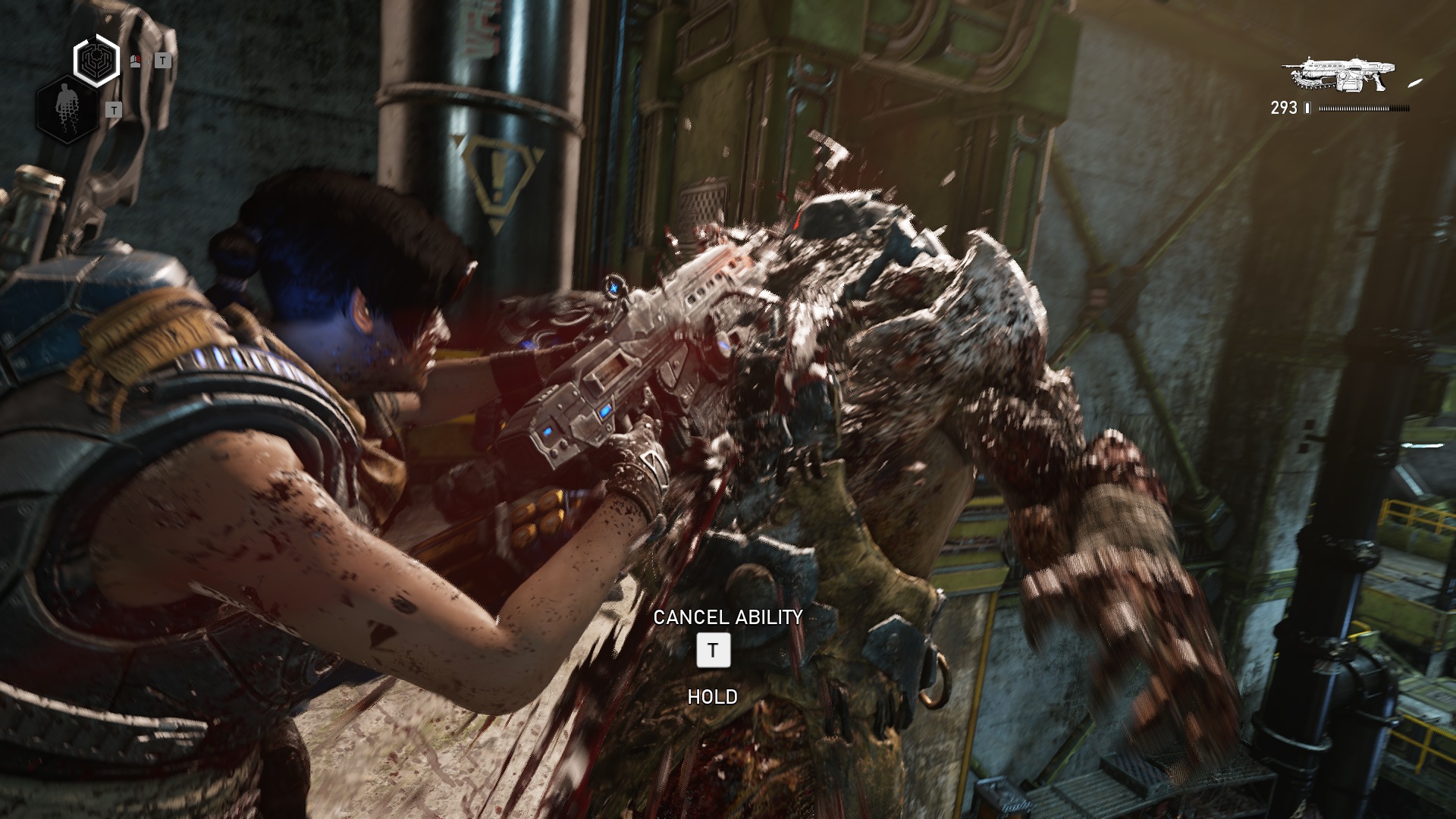
While much has changed about Gears 5, you’ll be pleased to hear the act of blasting Locust into tiny chunks remains largely the same. The core combat involves getting into cover and trying to flank your enemy without letting them flank you, before shredding them into mulch with bullets, blades and bombs. Your arsenal includes most of the weapons introduced over the last four games plus several new ones. These include a version of the Lancer that fires cluster grenades and the wonderfully smashy Breaker Mace, a melee weapon that might edge the iconic Chainsaw Bayonet in terms of splattery entertainment.
Although combat is enjoyably familiar, The Coalition has made one addition which, in the right circumstances, can make a big difference. Your robot companion Jack can be upgraded with active and passive abilities, such as a teamwide-cloaking device and a flash that blinds enemies, forcing them out of cover. At first they don’t feel that important, but as you progress deeper in the game and the difficulty increases, using the right ability at the right time can make a huge difference. I particularly like combining the Stim ability with the Breaker Mace, as it lets you run into the thick of the action and pulverise the Locust in a way that Gears doesn’t normally allow. Also, it looks awesome.
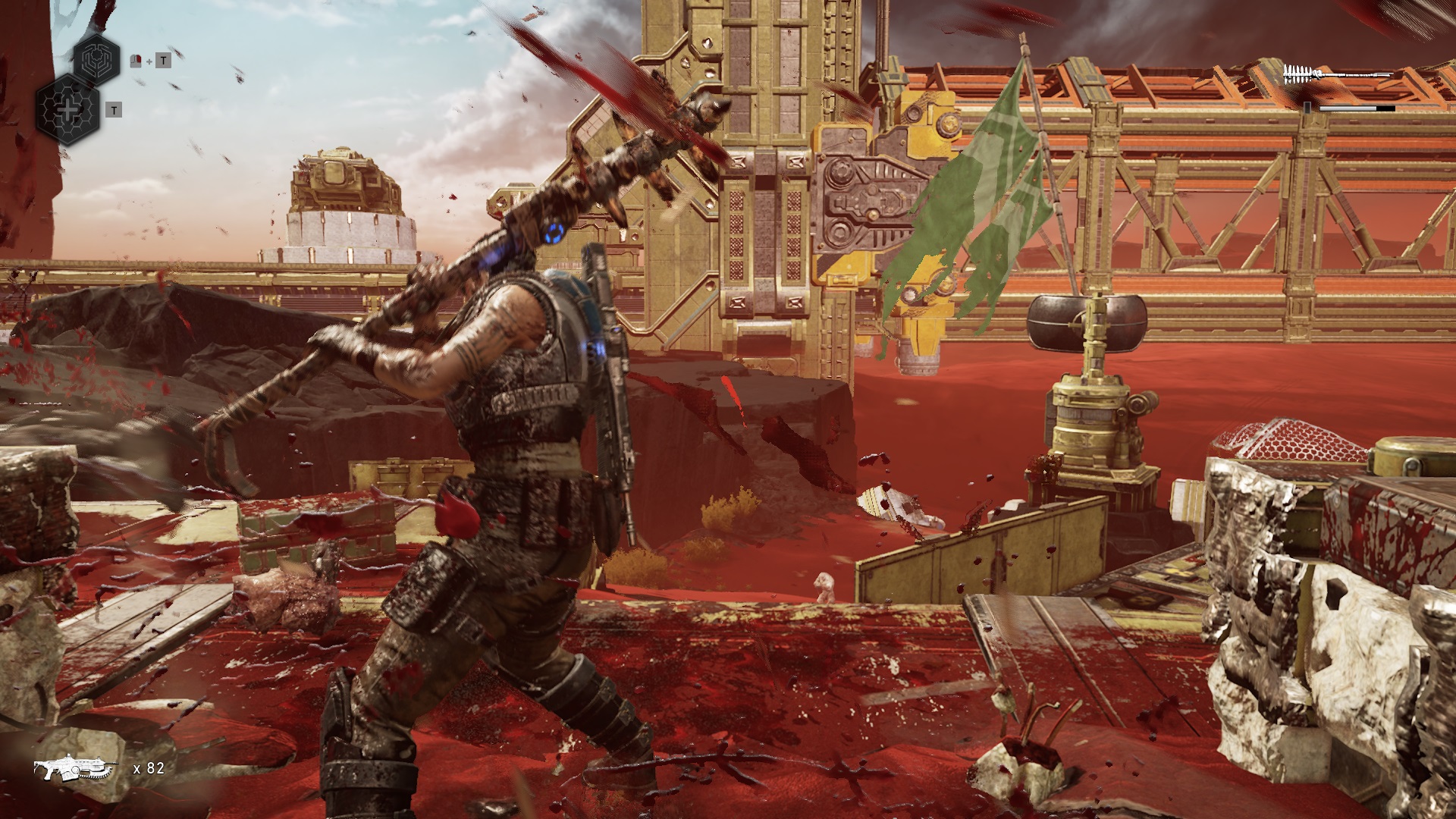
Jack’s abilities are useful in single-player, but they truly come into their own in cooperative mode. This is because one of your co-op buddies can control Jack directly, hovering invisible over the battlefield dispensing favours and zapping Locust with bolts of electricity like RoboZeus. It’s also worth noting that, alongside the familiar Horde and Versus modes, the multiplayer also adds a new mode called Escape, which sees your team caught between the Locust and an encroaching wave of toxic gas, forcing you to constantly advance into your enemy lines. It’s a tense and enjoyable mode that plays in much shorter rounds than Horde, making it easier to dip in and out of.
It’s a comprehensive package, as well it should be for the price that Microsoft is demanding for it. But Gears 5 is also a surprisingly thoughtful game. This goes back to what I said about progressivism. Some of this is obvious: the female lead, the equippable pride-flags in multiplayer, the wide range of accessibility options for less-able players.

But Gears 5 is also considerate of its own heritage in gaming. Like Judge Dredd and Batman and many other of our most lauded heroes, the COG always leant a bit on the fashy side. The earlier games didn’t go into this much, because, well, there was a great big war to fight. But Gears 5 takes place at a time after that war has ended. And although another one is starting up, the COG are no longer the underdogs. In fact, the COG is essentially the New World Order, one that is gradually spreading its tendrils across other, smaller human settlements that have found a way to thrive in the game’s post-apocalypse.
Although the game’s plot is nuts and bolts action stuff, much of the secondary thematic elements concern themselves with the COG’s colonial ambitions, and the increasingly oppressive way it consolidates its power. As you progress through the game, you hear about the COG violently suppressing riots, conducting ethically questionable experiments, and even fighting an outright war against a nomadic people. It’s not a bang-your-drum 'THE COG ARE BAD ACTUALLY' message, more of a subtle undercurrent that charts how the COG has struggled to adjust to a world where there is no enemy to fight and so starts to find enemies in increasingly minor resistance to its ideas.
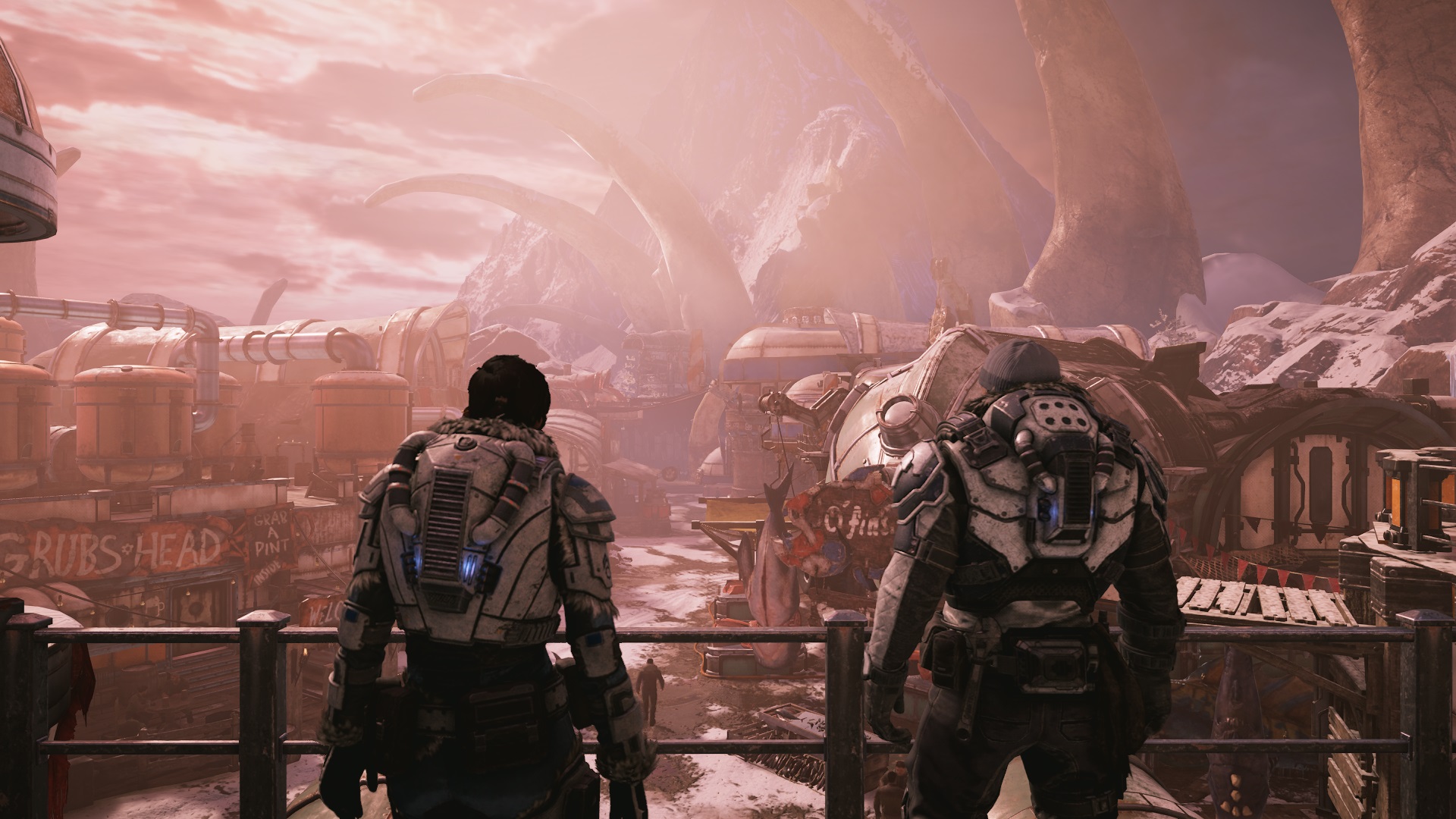
It’s a surprisingly thought-provoking subtext, especially for a Gears of War game. That The Coalition manages to balance this with a wry sense of humour and classic over-the-top action is commendable. For me, Gears 5 is the best game in the series since 2, and in terms of storytelling and world-building is the best of them all. And if you’re just here to brainlessly dissect some Locust, well, fill your boots.


MSI MPG Velox 100R Chassis Review
October 14 2021 | 15:04









Want to comment? Please log in.